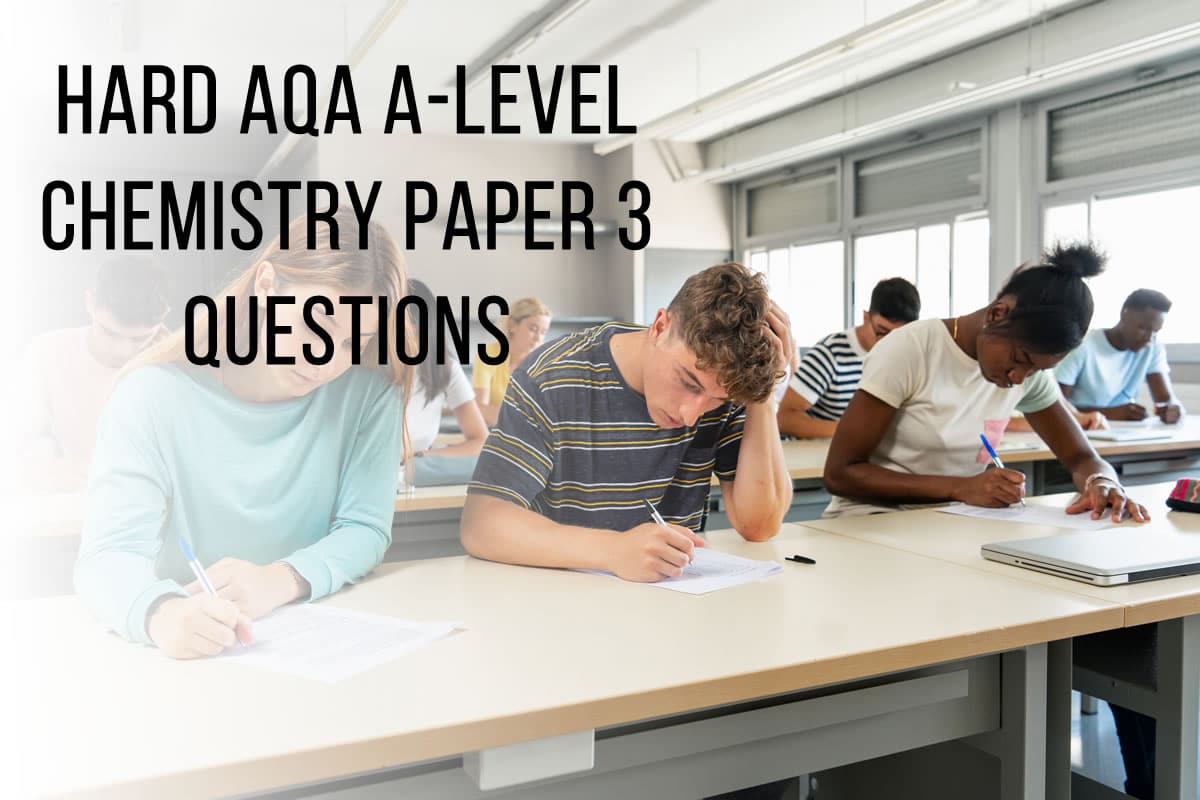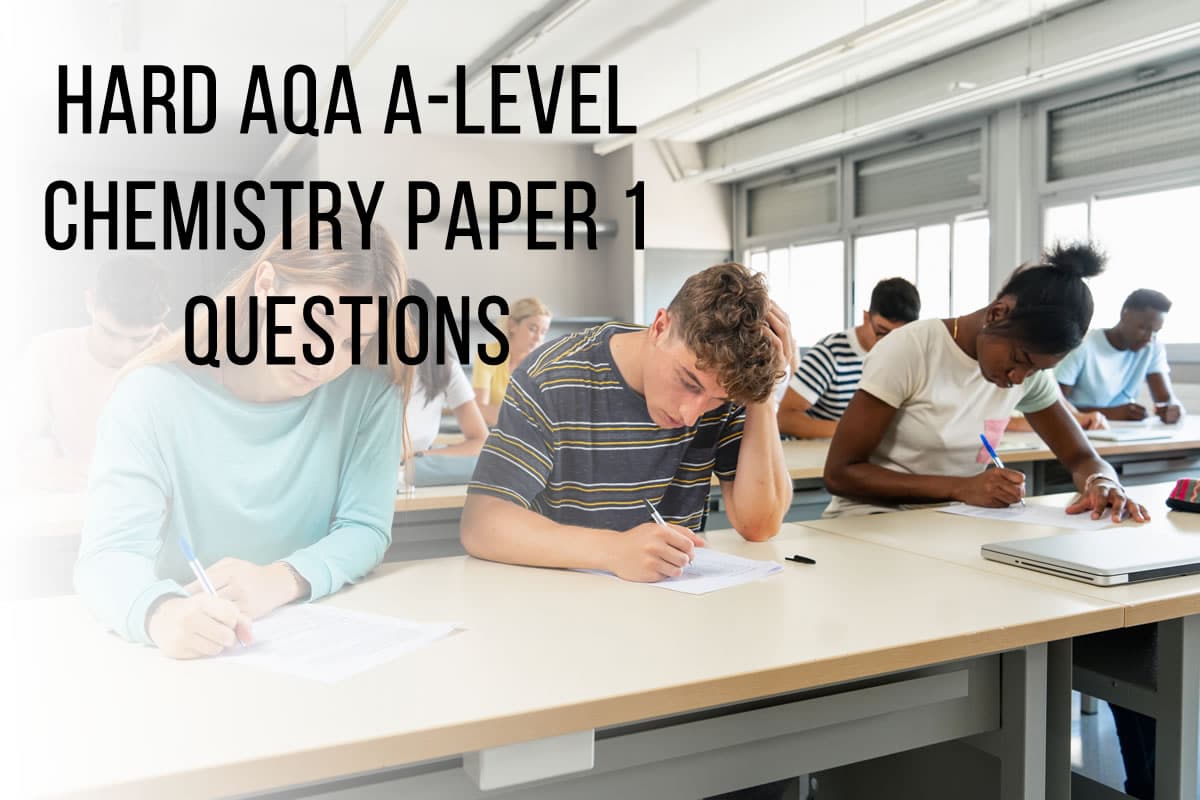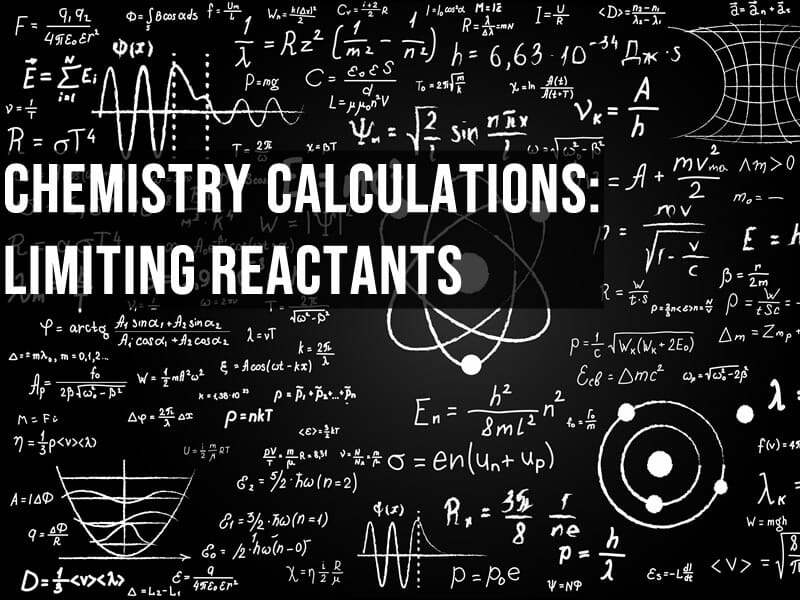50+ Chemistry IA Ideas with Research Question Examples
One of the biggest challenges facing students taking IB chemistry is coming up with a good Internal Assessment (IA) idea.
It’s got to be something suitably demanding for diploma-level study, it’s got to be something relevant to the chemistry syllabus, it’s got to be something you can’t just look up the answer to in a textbook, and crucially, it’s got to be a topic the student is personally engaged with.
Many students are unsure how to relate the IB chemistry topics to a real-world situation or problem that they can investigate. To help with this, I’ve produced a list of chemistry IA ideas, together with some example Research Questions (RQ).
I’ve grouped them together according to the main experimental technique or measurement method.
A big fat disclaimer
This is a list of ideas only, intended as a source of inspiration for students who are stuck for an idea.
It is a starting point for further research, not a list of off-the-shelf projects you can select from and take to your teacher.
Please do not just copy directly from this list!
There are several reasons why you shouldn’t do this:
Firstly, one of the internal assessment criteria is Personal Engagement. This is about how well you engage with the project and make it your own.
To achieve the maximum score “The evidence of personal engagement with the exploration is clear with significant independent thinking, initiative or creativity. The justification given for choosing the research question and/or the topic under investigation demonstrates personal significance, interest or curiosity. There is evidence of personal input and initiative in the designing, implementation or presentation of the investigation.”
It should be clear from these guidelines that you need to choose your own project and completely own it.
Secondly, some of the projects below are just plain bad for reasons I’ve outlined in my post about research questions.
These reasons include:
- The RQ is just a title
- The RQ is unfocused and unclear – impossible to understand what the aims are
- The RQ doesn’t include any variables
- Project is unimaginative
- Project has obvious outcomes
- Project is just a series of measurements or a synthesis, rather than an investigation
I’ve given a weaker and a stronger example research question for each category, but be aware that the stronger research question is not necessarily a good research question!
With that out of the way, here’s the list:
Acid-base titration IA ideas
| Idea | Weaker Research Question | Stronger Research Question |
|---|---|---|
| Determining waters of crystallisation | Are there more waters of crystallisation in cheap washing soda? | Does storage temperature affect the purity of washing soda crystals, determined using acid-base titration to find waters of crystallisation? |
| Vinegar concentration | Does the ethanoic acid concentration vary in vinegars obtained from different grains? | Does cooking temperature affect the concentration of ethanoic acid in vinegar, measured by acid-base titration? |
| Amount of aspirin in tablets | Does the amount of aspirin in different brands accurately match the label? | Using back titration to investigate whether the concentration of aspirin from more expensive tablets is higher after 30 minutes than from cheaper ones. |
| Drug formulations | Which types of indigestion medicines are fastest at neutralising stomach acid? | Is the release of ibuprofen from different formulations dependent upon pH and temperature, measured using acid-base titration? |
| Measuring pH | Factors affecting the pH of sauerkraut | Investigating the effect of fermentation time and temperature on the pH of kimchi using acid-base titration |
| Drug synthesis and purity | Is sublimation of salicylic acid after decomposition a reliable way to judge stability of aspirin tablets? | Determining the optimal solvent and temperature to give highest yield for the synthesis of Dulcin from Tylenol, using titration |
| Investigating acid-base chemistry | Determining the pKb of a base from its half-equivalence point | How is the buffer action of the sodium ethanoate-ethanoic acid system affected by temperature? |
Chemistry IAs using calorimetry
| Idea | Weaker Research Question | Stronger Research Question |
|---|---|---|
| Determining enthalpy changes | Using calorimetry to determine whether alcohols with more branching have higher heats of combustion | Comparing the enthalpies of combustion of ethanol, ethanal and ethanoic acid using calorimetry to quantify intermolecular force strength |
| Food calorimetry | Using calorimetry to find out which type of nut butter contains most calories | Using calorimetry to investigate how food calories are affected by cooking in unsaturated and saturated vegetable oils |
| Enthalpy of neutralisation | Is the enthalpy of neutralisation for different acids and alkalis aways 55 kJ mol per mole? | How does the size and charge of spectator ions affect the value for the enthalpy of neutralisation, measured using calorimetry? |
| Hess’s Law | Using Hess’s law to calculate a value for the enthalpy of reaction when magnesium burns in steam | Using Hess’s law and calorimetry to investigate the relationship between enthalpy of solution, enthalpy of hydration and lattice enthalpy |
| Heating and cooling | Which endothermic reactions are good for use in cooling packs, investigated with simple calorimetry? | How can errors due to heat losses be reduced when investigating the combustion of alcohols by calorimetry? |
IAs involving chemical tests
| Idea | Weaker Research Question | Stronger Research Question |
|---|---|---|
| Determining iodine number | What is the iodine number of different cooking oils? | How do light intensity and temperature affect the stability of unsaturated oils, determined by measuring iodine number? |
| Rates of substitution reactions | How is the rate of SN2 reactions affected by the carbon-halogen bond strength? | Using halide ion test to determine the activation energy for SN2 reactions of different halogenoalkanes with sodium hydroxide |
Chemistry IAs involving colorimetry
| Idea | Weaker Research Question | Stronger Research Question |
|---|---|---|
| Drug hydrolysis | Is the hydrolysis of aspirin in the stomach affected by the presence of metal ions? | Using the half-life method and colorimetry to determine the activation energy for aspirin hydrolysis at different pH values |
| Measuring pKa | Determining the pKa value for ibuprofen from pH curves using the half-equivalence method | What is the pKa value for natural indicators obtained from peonies, poppies and red cabbage, determined using colorimetry? |
| Measuring rates by continuous monitoring | Investigating the bleaching of various food colourings to determine the rate constant | How does the concentration of manganate(VII) affect the rate of the autocatalytic reaction with ethanedioate as measured by colorimetry? |
| Investigating a clock reaction | Studying the vanishing cross reaction between hydrochloric acid and sodium thiosulfate using titration | Using the initial rates method to measure the activation energy for the clock reaction between iodide and peroxydisulfate ions |
| Food colorimetry | Investigating the relationship between brewing time and manganese ion content in tea using colorimetry | Does boiling time effect the protein concentration in milk, measured using bicinchoninic acid assay and colorimetry? |
| Studying enzyme activity | Determining the optimum temperature for lipase activity | Using colorimetry to investigate inhibition of salivary amylase by metal ions with different charge density |
IAs involving complexometric titration
| Idea | Weaker Research Question | Stronger Research Question |
|---|---|---|
| Calcium content of food | Which type of eggshells contain most calcium as measured using precipitation reactions? | To probe whether water acidity affects the calcium ion concentration measured using EDTA complexometric titration |
| Analysing food minerals | Measuring the calcium ion content of six different soft cheeses using EDTA complexometric titration. | How does fermentation time effect the amount of salt in miso paste, determined via argentometric titration (Volhard method)? |
IAs involving databases
| Idea | Weaker Research Question | Stronger Research Question |
|---|---|---|
| Lattice enthalpy | Does the lattice enthalpy of different salts affect how effectively they melt ice? | Relating experimental and theoretical values for the lattice enthalpies to charge density of different metal ions |
| Computational chemistry | Evaluating different mathematical models for the calculation of pI values of amino acids and comparing to database values | Using molecular modelling to explore the relationship between halogen size and the preference for T-shaped geometry in interhalogen compounds |
Chemistry IA topics on electrochemistry (voltaic cells, voltammetry, electrolysis)
| Idea | Weaker Research Question | Stronger Research Question |
|---|---|---|
| Electroplating | Which factors affect the rate of electrolysis in electroplating metals? | How does voltage and electrolyte concentration affect the oxide layer thickness during the anodisation of aluminium? |
| Investigating electrolysis | Is the rate of copper purification affected by the voltage? | Investgating the effects of voltage and bubble overpotential on the electrolysis of sodium chloride using microscale Hoffman voltammetry |
| Electrochemical cells | Measuring the Gibbs energy change for different spontaneous electrochemical reactions | Is there a relationship between ionisation energy and Gibbs energy change for redox reaction between different reactive metals, determined using voltametry |
IAs involving gas chromatography
| Idea | Weaker Research Question | Stronger Research Question |
|---|---|---|
| Investigating equilibrium | Determing the equilibrium constant for the interconversion of cobalt(II) hexahydrate and tetrachlorocobaltate(II) | Finding the Gibbs energy change for the esterification reaction between propanoic acid and ethanol using gas chromatography |
IAs involving mass measurements
| Idea | Weaker Research Question | Stronger Research Question |
|---|---|---|
| Investigating hydrogels (smart polymers) | Do more expensive nappies contain better hydrogels that absorb water faster? | Does the concentration of nitrate ions in soil affect the mass of water that smart polymer hydrogels can absorb? |
| Studying thermal decomposition | Is ease of thermal decomposition of metal carbonates related to their solubility? | Investigating the relationship between metal ion charge density and thermal stability using thermal decomposition experiments |
Chemistry IAs involving microscale chemistry
| Idea | Weaker Research Question | Stronger Research Question |
|---|---|---|
| Microscale chemistry | Is microscale chemistry a safe and convenient way to do reactions with halogens in a high school environment? | Using microscale chemistry to determine the relationship between solubility product and temperature for different metal halides |
| Microscale chemistry | Is microscale chemistry a more efficient way to make aspirin in the laboratory? | Investigating the kinetics of the reaction between potassium iodide and lead nitrate using microchemistry |
IAs involving molecular modelling
| Idea | Weaker Research Question | Stronger Research Question |
|---|---|---|
| Modelling bond angles | Modelling bond angles in organic compounds and comparing them to actual values using ACD ChemSketch | The effect of halogen electronegativity and atomic radius on bond angles in halogenoalkanes determined using CambridgeSoft Chem3D software |
IA topics using photoconductivity (measuring light intensity)
| Idea | Weaker Research Question | Stronger Research Question |
|---|---|---|
| Determining activation energy | What is the activation energy for the oxidation of luminol by hydrogen peroxide? | Determining the activation energy of 3 different ‘glowstick’ reactions by measuring light output at different temperatures |
| Investigating fluorescence | How does oxidant concentration affect the intensity of light produced from luminol? | Using photometry to determine whether charge on the metal ion catalyst influences the rate of reaction between luminol and hydrogen peroxide. |
IAs involving polarimetry (measuring optical rotation)
| Idea | Weaker Research Question | Stronger Research Question |
|---|---|---|
| Measuring optical rotation | Investigating the hydrolysis of sucrose into glucose and fructose using polarimetry | Determining the equilibrium constant at different temperatures for the mutarotation of lactose using polarimetry |
IAs involving pressure measurement
| Idea | Weaker Research Question | Stronger Research Question |
|---|---|---|
| Determining standard molar volume | Applying Dalton’s law to study non-ideal gases | To determine the standard molar volume of hydrogen from the reaction between magnesium and HCl using a barometric method |
| Calculating absolute zero | Can Charles’ Law be used to accurately determine absolute zero? | Investigating whether ideal or non-ideal gases give a more accurate determination of absolute zero using volume-temperature ratio |
| Determining activation energy | Do other transition metals apart from iron(II) catalyse the iodine-clock reaction? | Does catalase or potassium iodide lower the activation energy most in the famous ‘elephant’s toothpaste’ reaction? |
Chemistry IA topics involving redox titration
| Idea | Weaker Research Question | Stronger Research Question |
|---|---|---|
| Vitamin C content in foods | Do superfoods contain more vitamin C? | Does cooking temperature affect the vitamin C content of kale as measured by iodometric titration? |
| Amount of oxalate in foods | Does cooking time affect how much oxalate is released from spinach? | Is the concentration of oxalate, measured by redox titration, in cooking water from foods like spinach affected by the water temperature and pH? |
| Determining molecular formula | Does thermal decomposition allow unknown salts to be identified? | Does the titration temperature affect how accurately the Mr of a hydrated salt can be determined using redox titration? |
| Percentage iron in vitamin tablets | Do expensive iron tablets contain more iron than cheaper vitamin tablets? | To investigate whether different iron complexes used in vitamin tablets are affected by pH using manganate(VII ) titration |
| Amount of copper in brass | Do different grades of brass contain different amounts of copper? | Using iodometric titration to investigate whether the amount of copper varies in different euro coins |
| Oxygen content in water | Is the oxygen level in my local canal enough to satisfy the biological oxygen demand (BOD) for fish? | Does water temperature or pH most affect oxygen levels in lakes as measured using the Winkler method? |
| Rust removers | Do rust removers containing oxalic acid work better if they are used hot? | To examine if oxalic acid or citric acid rust removers are more effective at higher temperatures using redox titration |
| Analysing wine | How does the ethanol concentration vary for different wines when measured using back-titration with dichromate and ferrous ammonium sulfate? | Investigating the effect of storage temperature on the sulfite concentration of Rioja using iodometric titration. |
IAs involving solvent extraction
| Idea | Weaker Research Question | Stronger Research Question |
|---|---|---|
| Caffeine determination | Using colorimetry to investigate whether coffee contains more caffeine than tea | Investigating whether solvent polarity affects the mass of caffeine extracted from coffee beans using HPLC |
| Caffeine extraction | Does water temperature affect the caffeine concentration of tea? | Does the charge density of the salt ions affect the partition ratio for caffeine extraction from water with different solvents? |
IAs using spectroscopy
| Idea | Weaker Research Question | Stronger Research Question |
|---|---|---|
| Radical substitution reactions | Does vitamin C act as a radical scavenger and slow down the rate of free radical substitution? | Does wavelength of UV light affect the products obtained from the reaction between ethane and chlorine, determined using NMR spectroscopy? |
| Investigating surfactants | Does the critical micelle concentration of ‘Triton’ and ‘Tergitol’ type surfactants affect their detergent ability? | Using spectrophotometry to investigate whether the CMC of quaternary ammonium salts is affected by pH |
| Chlorophyll in food | Does cooking time affect rate of chlorophyll degradation? | Investigating how water pH affects chlorophyll degradation at different temperatures using spectrophotometry |
| Investigating fluorescence | Using spectroscopy to investigate chlorophyll fluorescence | How is the fluorescence wavelength of fluorophores present in tumeric affected by solvent polarity measured by spectroscopy? |
| Measuring absorbance | Is the absorbance of light by transition metal complex related to the ligand charge? | Is their a correlation between metal ion charge and wavelength of light absorbed by transition metal complexes? |
| Determining rate expression | Using the vanishing cross method to determine the order of reactions when sodium thiosulfate and hydrochloric acid react | Evaluating the rate law and rate constant for the kinetics of the bleaching reactions of some common dyes using spectrometry |
| Enzyme kinetics | Determining the optimum temperature for the breakdown of hydrogen peroxide by catalase found in liver | Which factor, UV light, temperature or pH has the greatest effect on the denaturation of lipase measured using UV-VIS spectroscopy? |
| Investigating catalysts | Which is the best catalyst for hydrogen peroxide decomposition, potato, liver, manganese oxide or potassium permanganate? | Investigating solid acid catalysis of esterification reactions using infra-red spectroscopy |
IAs involving spreadsheets
| Idea | Weaker Research Question | Stronger Research Question |
|---|---|---|
| Spreadsheet calculations | Using Excel to calculate pI values for peptide and compare with literature values | Modelling the relationship between reaction quotient and equilibrium constant when changing temperature and pressure of the Haber reaction using spreadsheets |
Chemistry IA topics based around synthesis
| Idea | Weaker Research Question | Stronger Research Question |
|---|---|---|
| Different heating methods | Can aspirin be prepared using microwave heating instead of a water bath? | Assessing the yield of aspirin when prepared using microwave heating compared to conventional heating method |
| Aromatic compounds | Using thin-layer chromatography to investigate the synthesis of the antiseptic 2,4,6-tricholorohydroxybenzene | Comparing the products from the nitration of benzene, phenol and benzaldehyde using infra-red spectroscopy |
| Fragrance compounds | The effect of reaction temperature on the yield from esterification reactions | The effect of reaction temperature on product purity when synthesising Oil of Wintergreen assessed using TLC |
| Synthesising dyes | How does pH affect the colour of Sudan IV produced from a diazotisation reaction? | How does reaction temperature affect the yield of the diazo dye Disperse Red 13 in the Sandmeyer reaction? |
| Investigating novel reactions | Investigating the organometallic reaction between alkyl magnesium halides and propanone (Grignard chemistry) | Investigating the effect of halide substituent on the yield of phenacetin, prepared from paracetamol by Williamson ether synthesis |
| Organic lab techniques | Extracting Oil of Wintergreen and Menthol from Kwan Loong Oil using steam distillation | Investigating the ability of different anhydrous salts to absorb water from organic solvents by measuring cobalt(II) absorbance. |







Really, a very helpful article, thanks for sharing, and keep on sharing!
Hello Sir,
One of my students wants to conduct research about the amount of calcium in eggshells of different colors. However, He can’t explain to himself the relationship between water and calcium ion concentration.
Could you please elaborate so I can explain him?
Hi, I’m not sure I understand the question – eggshell colour is due to the presence of pigments rather than Ca2+ ion concentration?
Egg shell is a finish – Like – Matt finish, Low sheen, Egg shell, Semi gloss, Gloss etc. Within the finish, there are many colours produced – depending on the paint company – from 100 to 10000. Most of them gives the colours through tinting platform – Base + tinter combination. There is a variation of CaCo3 between the bases. Hope it helps
Any ideas how I could incorporate something to do with seaweed?
Found so much value from your post! Thank you!!
Really a very helpful article thanks for sharing and keep on sharing!
Astridde
My student wanted to do how peroxides can be a good preservation agent for milk
how better can he frame his RQ
Hello, I’ve been struggling for a while to come up with a type of question to be able to do an IA with. I’m interested in a topic having to do with pesticides but the thing is that I am not really sure how to convert it into an actual strong question. Can you please help? help/tips would be greatly helpful! Please and Thank you!
Hi, I wanted to determine protein content of something over different cooking time but I did some research on the google and I found that proteins are not affected by heating. So if I do this experiment, I will not see any difference in the protein content. Shoul I do this experiment? If I do this experiment and I write it as a IA, Will I get higher points? Will conclusion affect my point. Thank you
Hi, thanks for this nice article! I was thinking of investigating fragrance esters,specifically whether amount of unsaturation affects smell characteristics and volatility of the molecule? I am not sure how I can develop this up into an RQ. Any help you can give is appreciated. TIA
Hello Astridde, glad you find the article useful. The issue I can see to begin with is you have two dependent variables, volatility and smell characteristics. Volatility can be quantified and measured (e.g. vapour pressure) but ‘smell characteristics’ you would have to think how you can quantify and measure. Linking volatility and your independent variable (number of double bonds?) also sounds too simplistic to me as you can quite easily predict that relationship.
The earlier post I wrote on research questions will hopefully help.
[…] Don’t just copy an existing IA you found online, such as one from my list here! […]